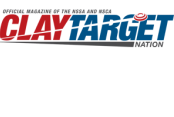Hold Points
“I’ve been taught the right way to shoot a report pair is to landmark the hold point and break point for both birds. After breaking the first, go to the hold point for the second, not just to the second bird. Makes sense. But what about a true pair? The second bird is long past its hold point by the time you get there.”
You will often encounter a true pair at a given station that is difficult, if not impossible, to engage with the same set of techniques that you would use if the two targets were presented as a report pair. For example, if you had a pair of quartering targets on report, the first one outgoing from the left and the second outgoing from the right, you might decide to engage both of these with a quartering move (come to the gun, then accelerate) or perhaps sustained lead. Either way might work well. However, if presented as a true pair, there would be insufficient time for you to get back to the proper second hold point to execute a sustained-lead or quartering move on the second outgoing bird after engaging the first target.
Herein lies the main reason that we, as higher-performing sporting clays shooters, must have more than one “stroke” in our repertoire of techniques. Golfers never play a round with only one club or stroke in their bag, and neither should you as a sporting clays shooter. We discuss this extensively in the “Target Tactics” DVD and in Chapter 16 of Mastering Sporting Clays.
In the above hypothetical true pair, you would be forced to change your technique on one or both targets. You could use an intercept (aka “cutoff and collapse”) on both targets or a combination of intercept on one target and sustained lead on the other. In this instance, pull-away might not be ideal, as you would have too much gun momentum at the end of your move on the first target to efficiently collapse the second target. As a sporting clays shooter shooting today’s technical targets, you must be proficient with multiple techniques and adapt your plan and technique to the unique character of a given target or target pair.
Don Currie is NSCA’s Chief Instructor, an Orvis Wingshooting School instructor, and Master Class competitor. To get free shooting tips and videos, sign up for his monthly newsletter. You can also see more tips from Currie at www.doncurrie.com.

